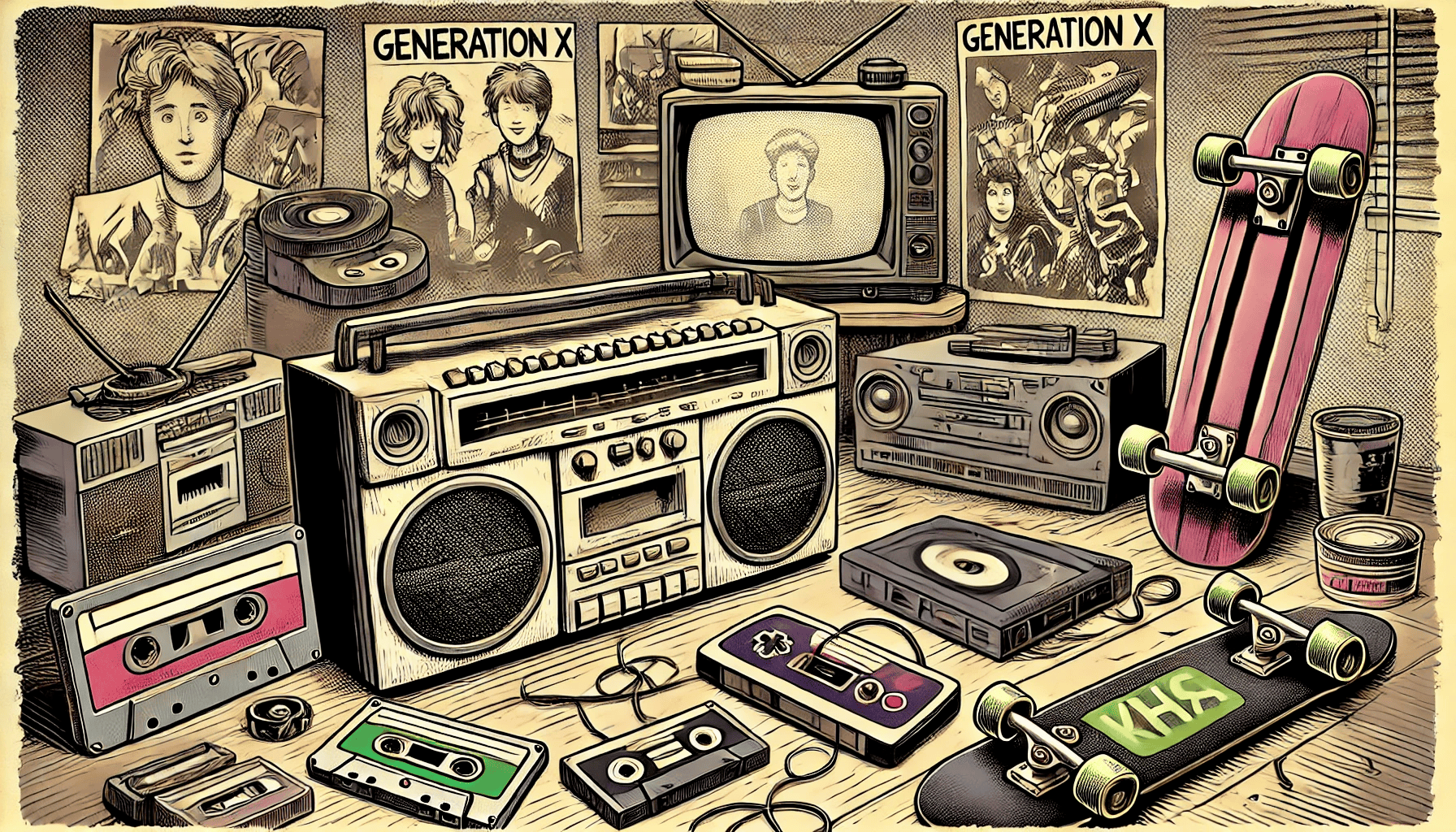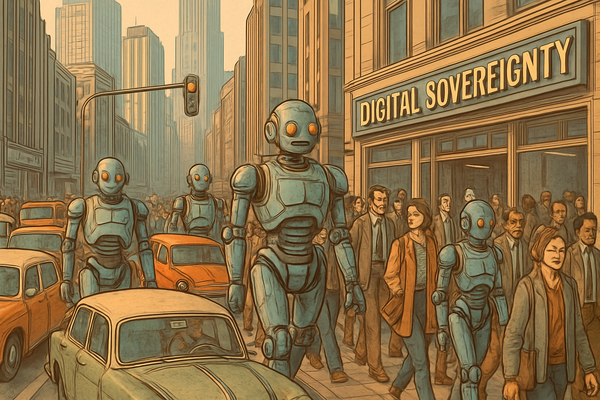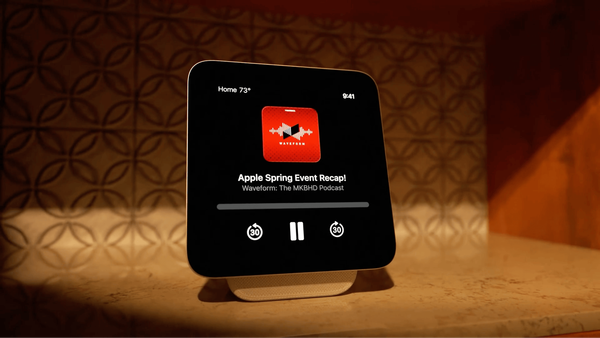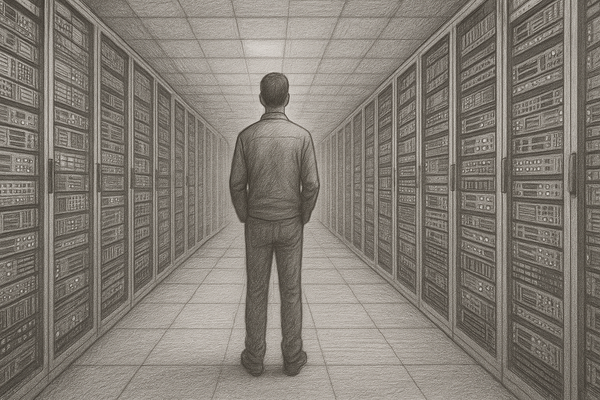Generation X: The Best of Both Worlds
Is Generation X > (Generation Y or Generation Z)? The answer is complicated.

Generation X is the last cohort to have one foot firmly planted in the pre-digital world while seamlessly adapting to the rapid technological changes that followed. We were raised on mixtapes, handwritten letters, and Saturday morning cartoons, yet we were also the first to embrace personal computers, email, and the internet. This unique position grants us a rare perspective—one that values both the patience and craftsmanship of an analog world and the speed and efficiency of the digital revolution. We understand progress because we lived through it, adapting with each new wave of innovation while maintaining the ability to unplug and appreciate the world beyond the screen.
Generation X: Witness of Many Defining Innovations
Ours was the generation that witnessed the birth of cultural and technological milestones that shaped modern entertainment, communication, and lifestyle. We saw the rise of MTV, which revolutionized music and youth culture, the advent of the personal computer, which changed how we work and learn, and the first gaming consoles like Atari and Nintendo, which introduced interactive digital entertainment.
The Sony Walkman allowed us to take our music on the go, while VHS tapes gave us the freedom to watch movies at home on our own schedule. Other significant innovations that shaped our generation include cable television, the rise of home video rentals, the fax machine, and the birth of the first mobile phones. These advancements not only defined our youth but also set the stage for the digital transformations that followed.

A Foot in Both Worlds: The Pre-Internet and Digital Eras
One of the defining advantages of being part of Generation X is having grown up in a world without the internet, personal computers, or smartphones, yet also being young enough to embrace and adapt to these technologies as they emerged. Unlike digital natives who have never known a world without instant connectivity, we understand both the analog and digital realms.
This dual exposure has fostered an exceptional ability to navigate change. Whether it was learning to type on typewriters before shifting to word processors or making phone calls on rotary dial phones before transitioning to mobile devices, we’ve proven to be highly adaptable. This experience allows us to bring a level of thoughtfulness to technology use that is sometimes lacking in younger generations who take digital convenience for granted. It has also helped us develop a sense of patience, problem-solving, and self-sufficiency that isn’t as common in today’s instant-gratification world.
The Many Shifts in Education for Generation X
Education during Generation X's school years looked very different from today. The learning process was shaped by traditional teaching methods, limited access to information, and the gradual introduction of technology into classrooms. Unlike younger generations who have grown up with digital tools at their fingertips, Gen X students relied on handwritten work, physical textbooks, and in-person research.
Classrooms primarily used chalkboards, overhead projectors, and physical card catalogs for research, making learning a more manual and time-intensive process. Standardized testing existed but carried less pressure compared to modern educational environments. Early computers were introduced in the 1980s, but their role was minimal, mostly reserved for basic programming lessons or typing practice. Math classes were completed without calculators at first, reinforcing strong mental arithmetic skills.
Despite these challenges, these conditions shaped Generation X into resourceful, independent learners. They developed strong problem-solving abilities, note-taking skills, and patience in an era where information wasn’t instantly accessible. This experience laid the foundation for their ability to adapt quickly when digital technology revolutionized education and the workplace.
The Transition from Traditional to Digital Workspaces
Generation X was the first to begin their careers in traditional work environments and then transition into the digital age. Many of us started working in offices that relied on fax machines, landline phones, and physical file cabinets before adapting to email, video conferencing, and cloud storage. This shift required a unique ability to balance structured work ethics with the flexibility of modern digital tools.
We have experienced firsthand the evolution of workplace communication, from in-person meetings and memos to instant messaging and remote collaboration. This adaptability has made Gen X professionals highly valuable in today’s workforce, as they understand both the necessity of traditional business practices and the efficiency of digital solutions.
We were also early adopters of remote work, long before it became mainstream, setting the foundation for today’s flexible and hybrid work models. Our ability to embrace both structured office environments and the digital economy has given us an edge in navigating the ever-changing professional landscape.
Long ago, remote work was done via a landline with a modem connected to a modem multiplexer. This method used a text-only user interface and terminal emulation software. It was rudimentary but effective, and it was before the Internet.

Communication Skills: From Handwriting to Digital Messaging
Growing up in an era where handwritten letters, landline phones, and face-to-face interactions were the norm, we developed strong communication skills that have carried over into the digital age. Unlike younger generations who rely heavily on instant messaging and emojis, we understand the nuances of formal and informal communication.
We wrote letters and essays by hand, learned proper phone etiquette, and experienced the early days of email and text messaging. This exposure to various forms of communication has given us an advantage in both professional and personal interactions, allowing us to bridge generational gaps effectively. We can craft a thoughtful email, engage in meaningful conversations, and still adapt to the brevity of modern digital exchanges. We appreciate the convenience of instant messaging, but we also recognize the value of a well-written, structured message that conveys deeper meaning and intent.
Balancing Digital and Analog Tools
In recent years, we've witnessed a resurgence of analog tools like notebooks for note-taking and journaling. While digital tools offer unparalleled convenience, many of us still appreciate the tactile experience of putting pen to paper, while later generations seem to discover a new way of interacting with our physical world. There is something grounding about writing in a notebook—it slows us down, helps with memory retention, and provides a sense of connection to the physical world.
This return to analog tools is a testament to our innate need for balance. As much as we embrace digital efficiency, we also recognize the value of unplugging and engaging in methods that have stood the test of time. Whether it’s journaling thoughts in a leather-bound notebook, sketching ideas on paper, or keeping a physical planner, we naturally strive for an equilibrium between digital and analog tools. The resurgence of vinyl records, film photography, and printed books further reinforces the idea that not everything needs to be digital to be valuable.

Every Generation Faces Unique Challenges and Opportunities
It’s important to acknowledge that there is no such thing as a 'better generation'. Each generation experiences unique challenges, advantages, and cultural shifts that shape their perspectives and skills. While Generation X had the privilege of witnessing the transition from an analog to a digital world, younger generations have adapted to new technologies and innovations that were unimaginable in the past.
Rather than seeing generational differences as a competition, we should view them as opportunities for mutual learning. By understanding each other’s experiences, we can foster greater collaboration and appreciation across all age groups.
Conclusion
Generation X stands as a bridge between the past and the future, embodying a blend of traditional values and technological adaptability. Our unique upbringing—straddling the pre- and post-digital world—has given us a resilience and versatility that is invaluable in today's fast-paced society. From our communication skills to our adaptability, we continue to offer perspectives that enrich workplaces, families, and communities alike. While often overlooked in generational discussions, our contributions and adaptability make us an indispensable force in the modern world.
I feel privileged to be part of the Generation X.



